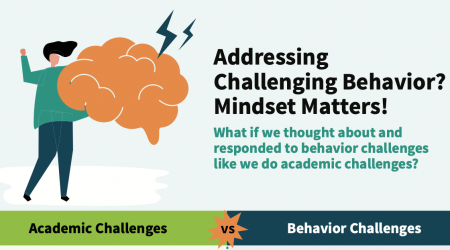At 321 Insight, we help K-12 staff meet growing student needs by providing bite-sized, relevant, and engaging job-specific PD. Get a free trial of one of our solutions to see what 321 Insight can do for your school or district!
Introduction
A well-planned classroom seating arrangement can significantly impact student learning, engagement, and behavior. Research consistently shows that how students are seated influences their participation, focus, and interactions with both peers and teachers. Whether it’s a traditional row setup or a more flexible, student-centered approach, seating arrangements can shape the learning experience in profound ways. In this article, we will explore different seating arrangements, their benefits and drawbacks, and the best practices for optimizing classroom layout based on research.
Summary
- The Science Behind Seating Arrangements
- Studies highlight that classroom seating arrangement affects student participation and interaction levels.
- Common Classroom Seating Arrangements & Their Pros/Cons
Traditional Row Seating, Horseshoe or U-Shaped, Cluster or Pod (Group Seating), Stadium or Tiered, Flexible Seating
- How Seating Affects Student Behavior and Engagement
Research indicates that classroom seating arrangement can impact student participation and behavior.
- Best Practices for Choosing the Right Seating Arrangement
Consider Class Size and Subject Matter, Balance Structure with Flexibility
The Science Behind Seating Arrangements
Studies highlight that classroom seating arrangement affects student participation and interaction levels. For example, research by Marx et al. (2000) found that students sitting in the front or in a semicircle were more likely to ask questions compared to those in the back rows. Similarly, Wannarka and Ruhl (2008) reviewed empirical studies and concluded that arrangements promoting group collaboration improve both academic and behavioral outcomes.
Furthermore, individual seating preferences can reflect social and cognitive factors. According to Rodrigues and Pande (2014), students who prefer the front seats tend to be more engaged and academically motivated, while those who opt for back seats may struggle with concentration or social anxiety. This data underscores the importance of intentional seat placement to enhance student success.
Common Classroom Seating Arrangements & Their Pros/Cons
Traditional Row Seating
Description: Students sit in straight rows facing the teacher. This arrangement is often associated with lecture-based learning.
Pros:
- Encourages individual focus and reduces distractions.
- Allows teachers to monitor students easily.
- Ideal for standardized testing environments.
Cons:
- Limits peer interaction and collaborative learning.
- Can lead to a passive learning experience, as students have fewer opportunities to engage in discussions.
Example: In a high school mathematics class, a row-based classroom seating arrangement was effective in minimizing distractions, allowing students to concentrate on problem-solving exercises.
Horseshoe or U-Shaped Arrangement
Description: Desks are arranged in a U-shape, creating an open space in the middle.
Pros:
- Enhances student discussions and teacher-student eye contact.
- Encourages active learning by making students feel included.
- Improves class participation compared to traditional row seating.
Cons:
- Takes up more classroom space.
- Can lead to off-task conversations if not managed properly.
Cluster or Pod Seating (Group Tables)
Description: Students are seated in small groups, facing each other.
Pros:
- Encourages collaboration and teamwork.
- Supports project-based learning and peer discussions.
- Enhances social skills and peer relationships.
Cons:
- May lead to distractions and off-task behavior.
- Can be challenging for teachers to address individual needs.
Stadium or Tiered Seating
Description: Seats are arranged in a stepped formation, common in university lecture halls.
Pros:
- Ensures visibility for all students, reducing distractions.
- Facilitates large-group instruction efficiently.
Cons:
- Can feel impersonal, reducing student-teacher interaction.
- Less conducive to collaborative learning.
Flexible Seating
Description: A mix of seating options, including standing desks, bean bags, and traditional desks.
Pros:
- Accommodates different learning styles and needs.
- Encourages movement, which can improve focus and behavior.
- Provides students with autonomy over their learning environment.
How Seating Affects Student Behavior and Engagement
Research indicates that classroom seating arrangement can impact student participation and behavior. According to Peer Status and Classroom Seating Arrangements: A Social Relations Analysis (2014), students who sit in central locations tend to be more socially integrated and exhibit higher engagement levels. Furthermore, students in group settings were more likely to engage in peer discussions and cooperative learning activities.
Best Practices for Choosing the Right Seating Arrangement
- Consider Class Size and Subject Matter:
- Larger classes may benefit from stadium or row seating.
- Discussion-based subjects work well with U-shaped arrangements.
- Balance Structure with Flexibility:
- Flexible seating can be effective when structured appropriately.
- Rotation of seating positions can improve engagement.
Conclusion
A well-planned classroom seating arrangement can greatly enhance student learning, engagement, and behavior. Whether using traditional row seating for structured learning or a more flexible arrangement to foster collaboration, the key is to align the setup with educational goals and student needs. Research underscores that no single seating arrangement is universally best—effective implementation depends on classroom dynamics, subject matter, and instructional style. By experimenting with different layouts and adapting to student needs, teachers can create an optimal learning environment that supports academic success.
What are your experiences with different classroom seating arrangements? Share your thoughts with us!
For more insights on classroom strategies and student engagement, sign up for the 321 Insight Newsletter.
FAQ
What is the best seating arrangement for a classroom?
The best classroom seating arrangement depends on the teaching style and goals. Traditional rows work well for lectures, while clusters or pods encourage collaboration. U-shaped or horseshoe layouts promote discussion, and flexible seating allows students to choose what suits their learning style best.
What are the three types of seating arrangements?
The three main types of seating arrangements are traditional, collaborative, and interactive. Traditional seating, with rows facing the teacher, is best for lectures and individual work. Collaborative seating, such as clusters or pods, encourages group work, while interactive arrangements like U-shaped or circular setups promote discussion and engagement.
What is a proper classroom arrangement?
A proper classroom arrangement is one that supports the learning objectives, student engagement, and teacher accessibility. It should allow for clear visibility, easy movement, and a balance between individual focus and group interaction. The best setup depends on the teaching style, class size, and subject matter.
How to make a classroom seating plan?
To make a classroom seating plan, consider the classroom layout, student needs, and teaching style. Arrange seats to ensure clear visibility, easy movement, and a balance between individual and group learning. Factor in student behavior, learning preferences, and any special accommodations to create an effective and inclusive setup.
Free Infographic
When it comes to addressing challenging student behavior, mindset matters! What if we thought about and responded to behavior challenges the way we do academic challenges? Use this poster as a guide to compare common approaches to academic vs. behavior challenges, and learn new ideas for improving the way we address challenging behavior.




